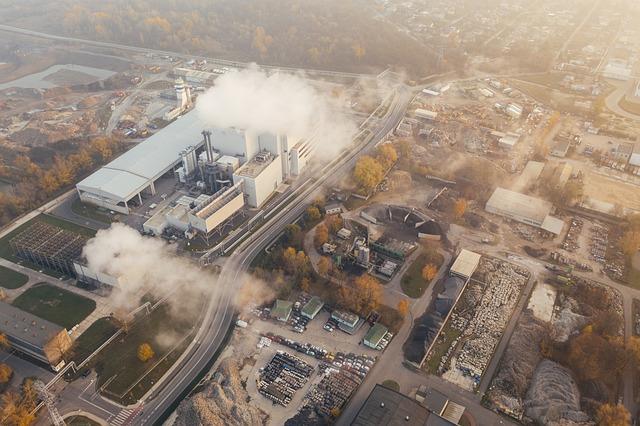- Introduction
- What is Hydrogen-Powered Steel?
- Benefits of Hydrogen-Powered Steel
- Challenges in the Adoption of Hydrogen-Powered Steel
- The Future of Hydrogen in the Steel Industry
- Conclusion
- FAQs
- References
Introduction
Hydrogen-powered steel is an emerging innovation that could revolutionize an industry that has relied heavily on fossil fuels for decades. Steel production is notoriously carbon-intensive, but new advancements offer a path to significantly greener and more sustainable practices. This blog article will explore what hydrogen-powered steel is all about, its benefits, the challenges that industries face in adopting it, and what the future might hold for this technology.
First, we will define hydrogen-powered steel and how it differs from traditional steel production. Next, we’ll cover its benefits, particularly its potential to reduce greenhouse gas emissions. We’ll also look at the hurdles preventing full-scale adoption of this technology and then explore what the future holds for hydrogen-based innovations in the steelmaking process.
What is Hydrogen-Powered Steel?

(Image: Pixabay/@geralt)
The term "hydrogen-powered steel" refers to the use of hydrogen as a reducing agent in the steel production process, often replacing traditional materials such as coal or natural gas. Typically, steel is produced by heating iron ore in a blast furnace that uses coke (derived from coal) to extract iron. Unfortunately, this traditional method emits a substantial amount of CO2, contributing to global warming.
In contrast, hydrogen can be used in what's known as "direct reduction iron" (DRI) technology to convert iron ore into metallic iron, with water vapor being the only byproduct instead of carbon dioxide. This forms the basis of what is commonly known as "green steel" or "hydrogen-powered steel." While the core metallurgy remains similar, the significant difference lies in reduced environmental impact.
The transition to hydrogen involves both modifications in existing technologies and entirely new infrastructures. Steel manufacturers need equipment capable of handling hydrogen, and this often requires high levels of technical skill and investment.
Global initiatives like the Paris Agreement have pushed governments and industries to search for climate-friendly alternatives, giving rise to hydrogen-powered steel as the next frontier in sustainable industrial development.
Benefits of Hydrogen-Powered Steel

(Image: Pixabay/@marcinjozwiak)
One of the most significant advantages to hydrogen-powered steel production is its potential to drastically reduce carbon emissions. The steel industry contributes nearly 7–8% of global CO2 emissions, making it one of the largest sectors affecting climate change. If hydrogen replaces fossil fuels in steel manufacture, the industry's carbon footprint could be substantially reduced, contributing to global decarbonization efforts.
Another key benefit is long-term cost savings. While the initial investment in hydrogen infrastructure may be high, over time the price of green hydrogen (produced using renewable energy sources like wind and solar) is expected to fall as the technology matures. As such, hydrogen-powered steel could compete favorably against traditional methods as prices for carbon-emissive processes increase due to regulatory pressures or carbon taxes.
Furthermore, employing hydrogen as fuel can improve the sustainability profile of industries that require steel, such as construction, auto manufacturing, and aerospace. These downstream industries are increasingly focused on sourcing environmentally friendly materials as part of their commitment to sustainability goals.
Additionally, hydrogen-powered steel production could promote energy independence. Countries that are currently reliant on imported fossil fuels for steelmaking could shift towards harnessing their domestic renewable resources to produce hydrogen, providing more localized energy ecosystems.
Challenges in the Adoption of Hydrogen-Powered Steel

(Image: Pixabay/@Mohamed_hassan)
Despite the many advantages, the widespread adoption of hydrogen-powered steel faces numerous hurdles. For one, the production of green hydrogen is still expensive and energy-intensive. Most hydrogen today is derived from fossil fuel-based processes known as 'gray hydrogen' or 'blue hydrogen,' which still result in some carbon emissions. To reduce emissions to near-zero, industries would need to rely on 'green hydrogen,' produced through electrolysis powered by renewable sources, which currently represents a very small fraction of global hydrogen supply.
There are also significant infrastructure challenges. Most existing steel plants are not equipped to handle hydrogen as a primary energy source, requiring expensive retrofits or replacements. New plants built with hydrogen capability in mind will also require substantial capital investments, deterring smaller companies from entering the market.
Supply chain issues further complicate adoption. For hydrogen-powered steel to work at scale, an extensive network of hydrogen production, transportation, and storage is essential. Unlike fossil fuels, which have well-established distribution systems, hydrogen infrastructure is still in its infancy.
Lastly, policy and regulation concerns create additional challenges. Government subsidies may be required to make hydrogen a competitive alternative to fossil fuels in the short term. Without a comprehensive policy framework covering everything from hydrogen production to safety standards, progress may be slow.
The Future of Hydrogen in the Steel Industry

(Image: Pixabay/@geralt)
Looking ahead, hydrogen-powered steel presents a crucial opportunity for combating global challenges like climate change, especially as nations move toward reducing their carbon footprints by mid-century. Major steel-producing regions are already testing hydrogen-driven pilots, forging partnerships with tech developers to scale production. Companies like Sweden's SSAB, Germany's Thyssenkrupp, and Austria’s Voestalpine are leading the charge in pioneering 'HYBRIT' and other hydrogen-infused steelmaking technologies.
Governmental involvement will likely escalate to boost competitiveness vis-à-vis fossil-intensive alternatives. For example, Europe has already started implementing carbon taxes, pressuring industries to seek cleaner methods of production, including hydrogen-powered steel.
The research community is also playing an essential role in increasing the efficiency and scalability of these processes. Universities and research institutes are working closely with industries to accelerate the integration of fuel cells, electrolyzers, and renewable energy systems into plant designs, ensuring that hydrogen adapts fluidly into the supply chain. Patents and intellectual properties in these areas have been growing exponentially over the past few years, reflecting a wave of innovative activity poised to redefine steel production.
While there are hurdles to overcome, the steel sector already stands at the edge of major breakthroughs that position hydrogen as a vital resource for sustainable industrial manufacturing in the future.
Conclusion
Hydrogen-powered steel signifies a pivotal shift away from carbon-heavy production towards a future dominated by sustainability. It offers multiple benefits, from reducing carbon emissions to fostering energy independence, and plays a critical role in a more circular economy. However, it is not without significant challenges. Green hydrogen production costs, infrastructure limits, and industry-wide adoption barriers need to be addressed before it realizes its full potential.
With concerted efforts from both the public and private sectors, however, hydrogen-powered steel could eventually become a mainstream solution — pushing the global steel industry closer to net zero and advancing the broader goals of environmental resilience and sustainability.
FAQs
What is hydrogen-powered steel?
Hydrogen-powered steel refers to the use of hydrogen as the primary reducing agent during the production of steel, replacing more carbon-intensive options like coal.
How does hydrogen steel production reduce carbon emissions?
Using hydrogen as a reducing agent in direct iron ore reduction produces water vapor instead of carbon dioxide, effectively lowering greenhouse gas emissions compared to traditional steelmaking methods.
Is hydrogen-powered steel more expensive than traditional steel?
Currently, it is more expensive due to the high costs associated with green hydrogen production. However, as hydrogen production becomes cheaper over time, it is expected that hydrogen-powered steel will become more economically viable.
What countries are leading in hydrogen-powered steel technology?
Countries like Sweden, Germany, and Austria are pioneers in this field, with companies and governmental incentives driving the research and implementation of hydrogen-powered steel technology.

